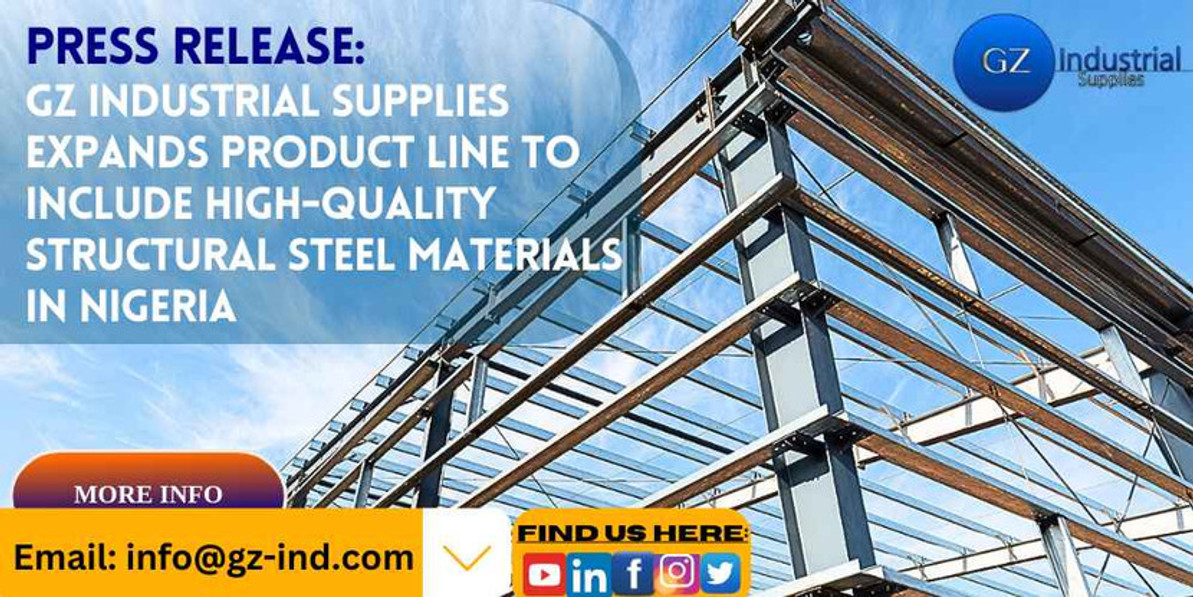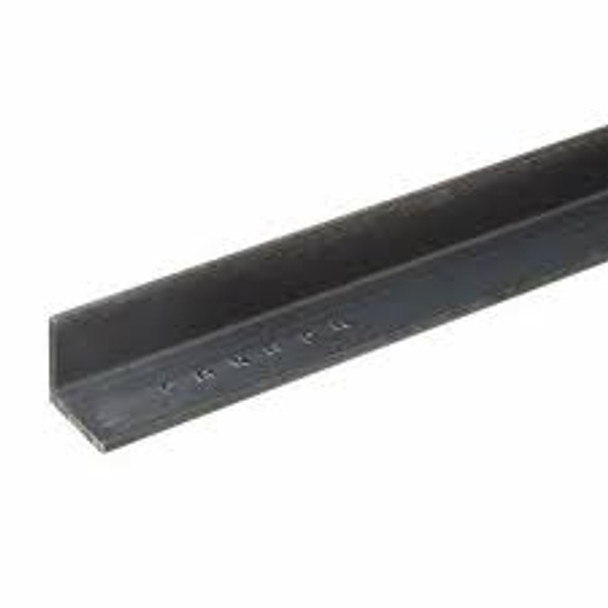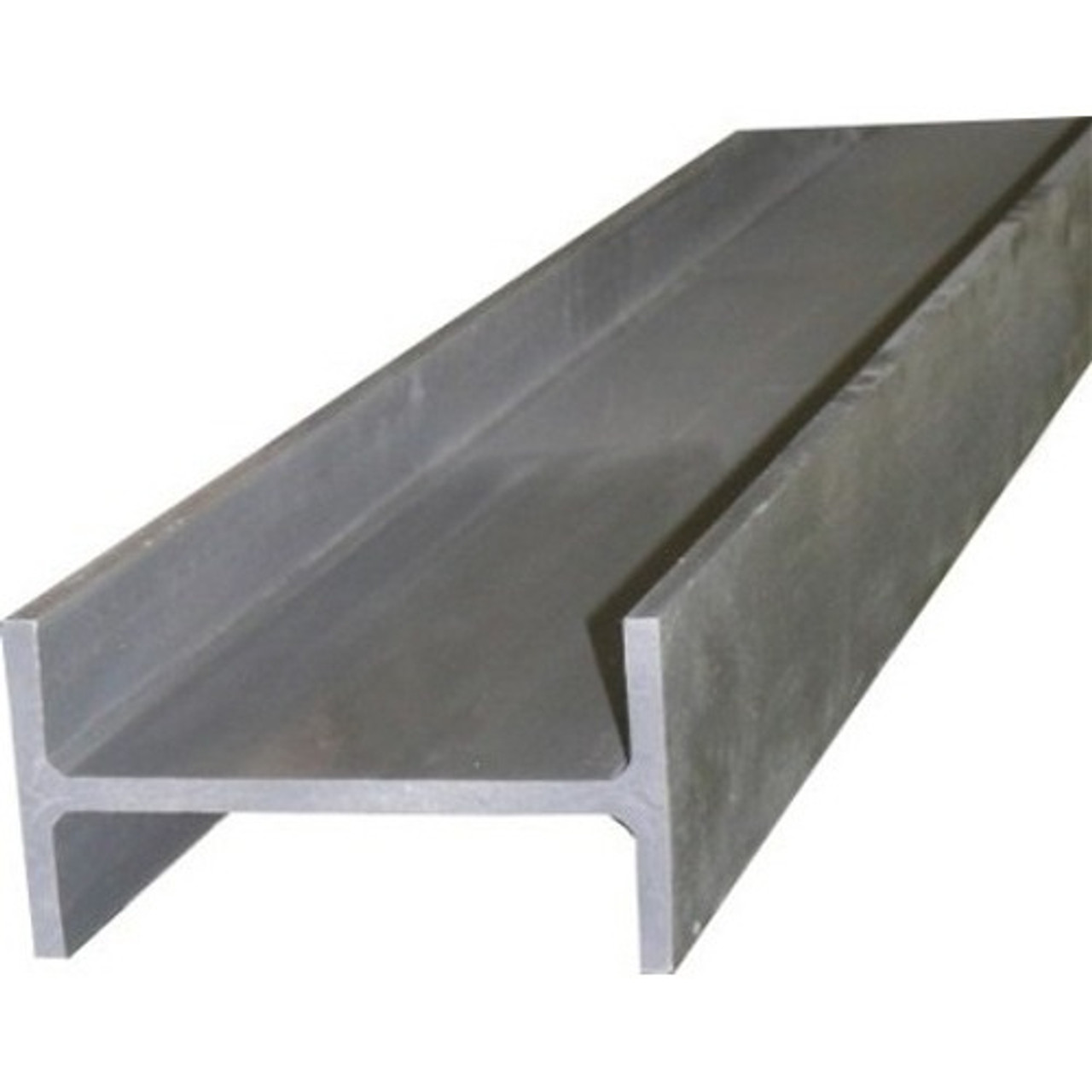PRESS RELEASE: GZ INDUSTRIAL SUPPLIES EXPANDS PRODUCT LINE TO INCLUDE HIGH-QUALITY STRUCTURAL STEEL MATERIALS IN NIGERIA
GZ Industrial Supplies Limited is pleased to announce the expansion of its product line to include high-quality structural steel materials reports PRLOG. Structural steel is a type of steel that is used as a construction material. It is designed to have a good strength/weight ratio (which is also called specific strength) and to be cost-effective in order to be benefited as a structural component in buildings, roads, bridges, etc.
“We are delighted to welcome structural steel material to our portfolio said Anthony Ubong, Brand Ambassador, GZ Industrial Supplies Limited. Structural Steel is the most preferential metal by architects, designers, engineers, contractors, and fabricators due to its durability, strength and weight ratio that makes it excellent to use in the construction of enormous structures.”
Why steel? Steel as a robust material
Steel, one of the most essential materials of the modern world, comes in various different grades and shapes. It is simply an alloy of iron and a very low amount of carbon (up to 2.1% in weight). There also other elements sometimes. Due to its high tensile strength and low price, it is a significant component utilized in infrastructure, tools, ships, cars, machines, appliances, and buildings.
Steels are produced and used with various production methods by providing microstructure change by making necessary heat treatments according to the desired feature. In addition, alloy elements can be added to steel for having varying properties. Phase diagrams are particularly important in heat treatment.
Structural Steel Types and Grades
There is not just one type of structural steel. There exist various different shapes and grades, depending on the needs for that specific application. Structural steels are classified by the shape of their cross-sections, such as the most frequently used I, T, C shapes (2). Besides their shape, the grade of the steel directly affects the mechanical properties. So, different grades of structural steel must be chosen according to different design requirements.
Several types of steel can be shaped and used as beams, rods, plates, bars, or profiles. Here are the standard structural steel materials:
1. Carbon Steels:
Steel can be defined as carbon steel when the addition of any other alloying element (such as tungsten, zirconium, cobalt, nickel, etc.) is not required, copper content does not exceed 0.4% or the following elements does not exceed indicated percentages in weight (Mn: 1.6%, Si: 0.6%, Cu: 0.6%) (3). Carbon steels are generally categorized by their carbon content as low-carbon (< 0.3%), medium-carbon (0.3-0.6%), high carbon (0.6-1%) and ultrahigh carbon (1.25-2%) steels. It is mostly used in structural pipe and tubing.
Structural Rolled Steel Angle bar 40x40x6mm Hellog
Structural H steel Beam Size 300x300 80kg Hellog
2. High Strength Low Alloy Steels:
This kind of steel is designed to have better mechanical properties and be more resistant to atmospheric corrosion than carbon steels. They contain manganese up to 2.0%. Small portions of other alloying elements such as chromium, nickel, molybdenum, nitrogen, vanadium, niobium, and titanium can be used in different combinations to alter the properties (3). Weathering steels which are a sub-type of high strength low alloy steels have high resistance against atmospheric corrosion by forming a passive, rust-like layer on the surface, being one of the important structural steels. Mostly used in structural shapes and plates.
3. Tool steel:
Tool steel is a type of metal alloy that is used primarily in manufacturing tools. It is usually made from iron, carbon, and other elements such as chromium, molybdenum, or tungsten. It is often heat-treated to increase its durability and strength. This makes it an ideal material for making parts that must withstand high levels of force or friction without breaking or wearing down quickly. Tool steels are often used to make knives, punches, dies, cutting tools, drill bits, taps, reamers, saws, and hammers.
4. Stainless steel Grade:
Stainless steel is a widely used metal alloy known for its exceptional corrosion resistance, durability, and versatility. It is composed primarily of iron, along with varying amounts of chromium, nickel, and other elements, depending on the specific grade. The selection of a stainless steel grade depends on the desired properties and the intended application.
Advantages of Structural Steels
Higher strength/weight ratio:
When compared, steel dominates every other conventional structural material such as stone, cement, or wood in terms of strength/weight ratio. It means that the tolerance against poor foundations is higher.
Good ductility:
Ductility is the ability of the material to withstand loads without failure. Thanks to the elastic nature of steel, it can return to its original shape after bending. Yielding up to some point prevents premature failures. Hard and brittle materials can fail suddenly, thus are not favourable.
High Toughness:
The ability of a material to absorb energy is called toughness. Structural steels have high toughness values; thus they are very suitable for construction applications. They are both strong and ductile. Also, it should be mentioned that the main difference between mild and structural steel is that structural steels are stiffer in order to carry higher loads without needless sagging.
Architectural variety:
Steel structures make so various different architectural designs possible. All around the world, astonishing steel buildings, towers, and bridges can be witnessed. One would be surprised to find out that this material was not economically reasonable to use as a structural component, just one hundred years ago.
Saving space:
In a comparison with reinforced concrete, a 40×40 cm2 steel carrier can do the same job as a 100×100 cm2 reinforced concrete carrier. This example shows that a net saving in terms of a usable area can be done (5).
There exist some drawbacks which can be solved with additional costs like corrosion and fire susceptibility, or the risk of buckling under heavy loads. Yet, major advantages may still outweigh these drawbacks in particular design applications.
Structural Steels Applications
What comes to your mind when you hear the word structural steel? Hopefully, it’s not just construction. Structural Steel is the most preferential metal by architects, designers, engineers, contractors, and fabricators.
Construction
Structural steel has varied applications in the construction industry. It is generally used in designing and building industrial places. Structural steel has a high strength/weight ratio that makes it excellent to use in the construction of enormous structures such as buildings, warehouses, bridges, factories, etc. Steel frames, beams, columns, bars, girders, plates, and many others are created by structural steel fabricators which are used in the construction industry. Every year, about 25% of structural steels are used in the construction of buildings.
Mining
The mining industry has a lot of applications of structural steel. Most of the components in the mining substructure are reinforced using structural steel. All workshops, offices, structural parts of mines such as mining screens, fluidized bed boilers, buildings are made with structural steel. Structural steel is easy to clean because of its smooth surface. Therefore, do not interfere with other elements
Transportation
Structural steel is used to produce trucks, transmissions, trains, rails and ships, anchor chains, aircraft undercarriages, and jet engine components. Most of these vehicles contain a significant amount of structural steel. Structural steels used due to their elasticity, corrosion resistance, tensile strength, ductility, malleability, and affordability.
Marine
Most marine vehicles are built using structural steel, for example; submarines, boats, supertankers, ladders, steel flooring, and grating, stairs, and fabricated sections of steel. Structural steel can resist external pressures, can be formed easily. These properties make structural steels purposive for the marine sector.
Energy
There are a lot of structural steel applications in the energy industry. It is used in many industrial buildings in renewable and non-renewable energy sources such as transmission towers, pipelines, wind turbines, electromagnets, transformer cores, oil and gas wells.
Standards
Structural steel shapes, sizes, chemical composition, mechanical properties like strengths, storage practices are manufactured by standards. Structural steels are generally specified based on the appropriate industry or national standards, such as ASTM, API, BSI, ISO, etc. In most cases, standards give mainly the basic requirements such as limits on chemical composition and tensile properties.
About GZ Industrial Supplies Nigeria
GZ Industrial Supplies Limited is into supplies of industrial materials and is one of the homes of the largest direct marketers and premier distributors of industrial materials, Metalworking and Maintenance, Repair and Operations ("MRO") Supplies, Workshop Tools, Power Tools, and Accessories Lubricants, Chemicals, Cleaning and Maintenance Chemicals to industrial customers in Nigeria. GZ Supplies Nigeria employs one of the industry's most significant sales forces and distributes over 100,000 industrial products from over 100 suppliers to our growing list of customers. Looking for where to get a durable and cost effective steel, visit www.gz-supplies.com for more information.
Recent Posts
-
Top Transformer Suppliers in Nigeria: Where to Find the Best Prices
In Nigeria’s rapidly expanding industrial landscape, transformers play a pivotal role in ensuri …18th Apr 2024 -
The Ultimate Guide to Choosing the Best Electrical Wire for Your Projects in Nigeria 2024
Electrical wiring is crucial across various industries, ensuring safety, operational reliability, an …15th Apr 2024 -
Comparative Analysis: Distilled Water vs. Tap Water for Battery Use
Key takeaway:The purity of distilled water helps in maintaining the optimal chemical balance within …14th Apr 2024





